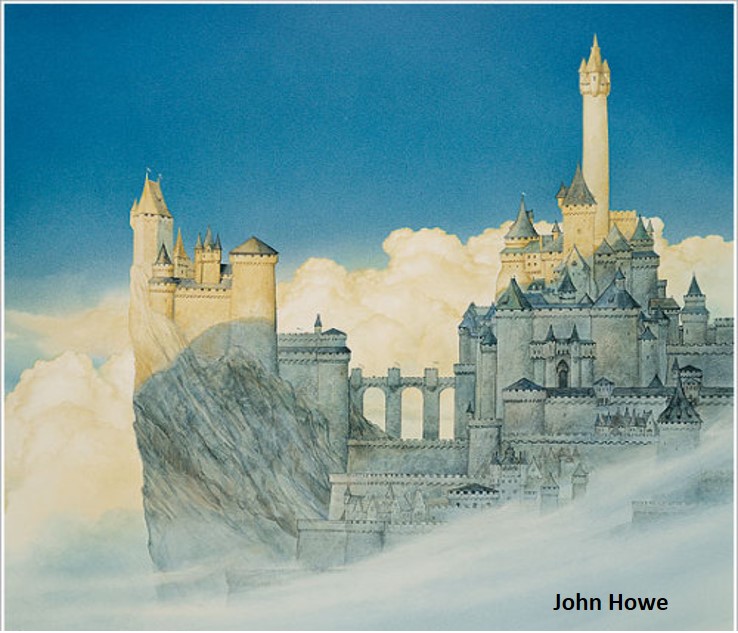
At the outset of the Second Age all of the peoples of Middle-earth had to start over, after their kingdoms and homes were lost in the destruction of Beleriand. Entire rivers, coastlines and regions were gone forever. Moreover, most of the great leaders of Elves and Men perished or left Middle-earth during the First Age. Fingolfin, Fingon, Beren, Lúthien, Húrin and Eärendil were all gone. The ‘baddies’ also lost many of their greats, including Morgoth, Gothmog, and most of the Balrogs and dragons.
Those filling the void of leaders and heroes in the Second Age included Elrond and his brother Elros, Celebrimbor the Elven smith, Gil-Galad, now High King of the Noldor, and Númenorean faithful, Elendil. On the side of evil, any remaining Balrogs and dragons had gone into hiding, so that particular void was primarily filled by Sauron and his legions of orcs and corrupted men. Sauron’s forging of the One Ring in the Second Age and his powers of persuasion also managed to blur the lines of good and evil that were so easily delineated during the First Age. The One Ring’s power over lesser rings to turn once good and noble men to evil, and Sauron’s powers of persuasion, corrupted Elves, men and Kings of men.
Suffice it to say that the events of the Second Age are no less dramatic and compelling than those of the First Age. So, with that let’s delve into 16 of the most important events of the Second Age of Middle-earth, shall we?
Elros & the Edain reach Númenor (SA 32): Given the choice of the halfelven by the Valar, Elros chose to be counted among the race of Men. As such, he led the Edain (Men) to the island of Elenna, a gift of the Valar for the help the Edain provided to defeat Morgoth in the First Age. The Valar wanted to provide a special place for the Edain separate from Middle-earth and closer to Valinor, though the Edain were strictly prohibited from going far enough west that they lose sight of Elenna. The name of the realm Elros founded, which became synonymous with the name of the island, was Númenor. As king, Elros took the Quenya name of Tar-Minuyatur setting a tradition for all the kings of Númenor to follow.
Migration of dwarves to Moria & Khazad-dûm (c. SA 40): Moria’s origins began prior to the First Age when Durin awoke. Looking into the lake of Kheled-zâram, he saw a crown of stars reflected in its waters and took it as a sign to stay. In the caves above the lake, Durin and his folk delved from the east side of the Misty Mountains eventually reaching the west side, and Moria became one of the greatest strongholds of the Dwarves. Unique among its natural resources was the rare metal Mithril. After the destruction of Beleriand at the end of the First Age, many Dwarves migrated to Moria, making it possible to mine more Mithril, and making the caverns even greater and more beautiful.
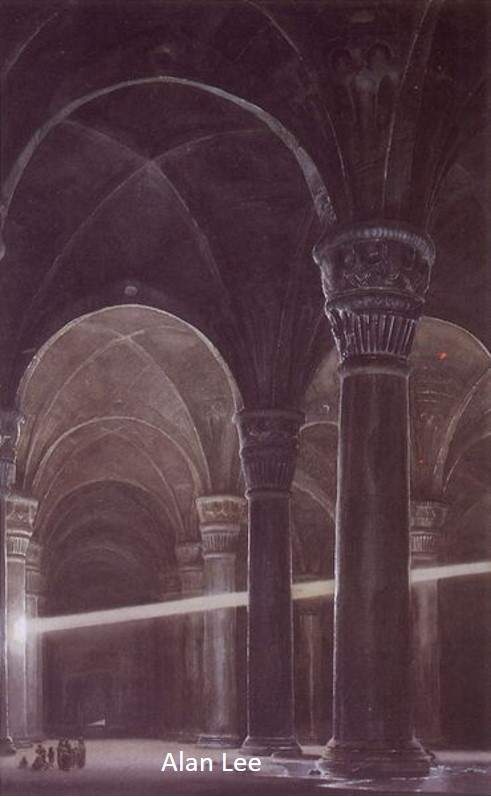
Sauron builds Barad-dûr in Mordor (c. SA 1000): Sauron, originally a Maia of Valinor, was among the servants of Morgoth who escaped the wrath of the Valar and the destruction of Beleriand. Thinking that the Valar had once again forgotten Middle-earth, he began ensnaring Men and orcs alike to his service. Alarmed by the growing power of the Númenorean visitors to Middle-earth, he decided to hedge his bets and construct his own fortress. To that end, he constructed the fortress of Barad-dûr near Mount Doom in the land of Mordor. To complete it, Sauron eventually used the power of the One Ring, making it impregnable as long as the One Ring existed.
Celebrimbor crafts the Rings of Power (c. SA 1500): Celebrimbor, a grandson of Fëanor, founded the realm of Eregion on the west side of the Misty Mountains around SA 750. Its proximity to Moria was no accident, as the Elves were drawn by the availability of Mithril, and they traded freely with the Dwarves of Moria. Around SA 1200, Sauron began visiting Eregion in fair form under the name of Annatar, ‘Lord of Gifts.’ Imparting some of his knowledge of magic, he assisted Celebrimbor’s smiths in creating a number of rings of power.
The Three Elven Rings are completed (c. SA 1590): After Sauron/Annatar left, Celebrimbor created the three great Elven rings of power: Vilya and Narya (made of gold), and Nenya (made of Mithril). As they were forged without the knowledge of Sauron, they weren’t subject to his will.
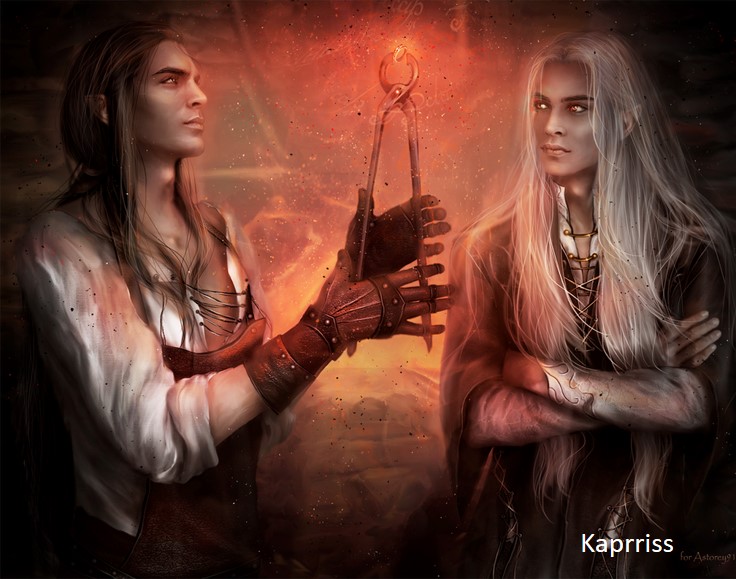
Sauron forges the One Ring (c. SA 1600): During his time with the Elven smiths and Celebrimbor, Sauron took as much knowledge as he gave regarding the forging of rings of power. Having left Eregion, he returned to Mordor and forged the One Ring in the fires of Mount Doom, putting a large amount of his own power into the Ring. Celebrimbor immediately realized he had been betrayed, and a war between Sauron and the Elves ensued, leaving Eregion destroyed. Celebrimbor was captured by Sauron. Under torture and before he died, he revealed the location of all the rings of power except the three Elven rings. Sauron eventually used the power of the One Ring to dominate and control the owners of all the lesser Rings of Power, save the Three which were hidden from him.
Elrond builds the refuge of Imladris/Rivendell (SA 1697): After the fall of Eregion, Elrond founded the refuge of Rivendell, or Imladris, near the western slopes of the Misty Mountains. Rivendell became a shelter for the Elves fleeing the destruction of Eregion by Sauron’s forces, and would also become a safe haven for many a traveler throughout both the Second and Third Ages. Elrond had received the Elven Ring, Vilya, from Gil-Galad, and it was partially through its power that he was able to protect Rivendell throughout the Second and Third Ages. At the end of the Second Age, Rivendell served as a gathering point for the forces of the Last Alliance of Elves and Men, prior to crossing the Misty Mountains to eventually confront Sauron.
The Ringwraiths arise (SA 2251): After sacking Eregion, Sauron gave nine rings of power to mortal men. As with many of the rings of power, the life of the ringbearers was prolonged and they enjoyed great power while it lasted, but being mortal men they eventually turned into shadows of their former selves, or wraiths. The recipients of the nine rings are referred to in Tolkien’s writings as nine kings of men. However, only one of the Ringwraiths was ever named. Khamûl was a king of the Easterlings during the Second Age, and one of the wraiths to enter the Shire in search of the bearer of the One Ring in the Third Age. The Witch-king was the greatest of the Nine, but Tolkien never revealed his origins or his name. Nevertheless, the Ringwraiths, or Nazgul, were Sauron’s most terrible servants, and turned the tide of many future battles to Sauron’s benefit.
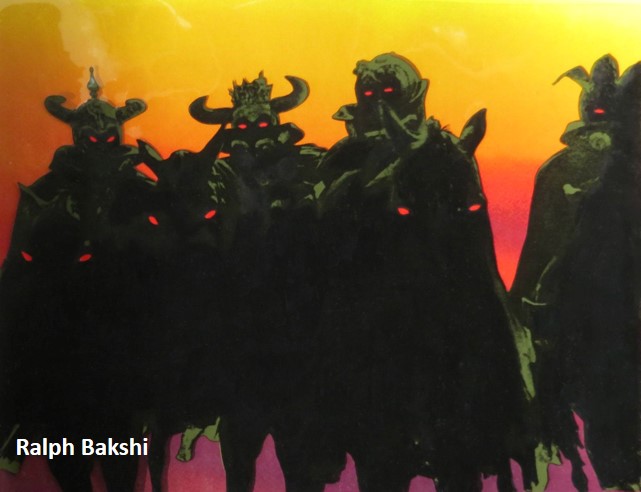
Sauron is “defeated” & brought to Númenor (SA 3262): After destroying Eregion, Sauron and his forces continued westward with the goal of dominating all of Middle-earth. At the request of the Elves, the Númenoreans came to their aid, eventually driving Sauron and his forces back. When Sauron realized he was losing, he allowed himself to be taken as a prisoner to Númenor by King Ar-Pharazôn. Using his considerable powers of persuasion, he converted many Númenoreans to the worship of darkness, and convinced Ar-Pharazôn that the Valar were selfish to retain immortality only for themselves. At Sauron’s urging, Ar-Pharazôn eventually decided to openly attack Valinor, convinced that in doing so he would become immortal.
Ar-Pharazôn builds the Great Armada & assails Valinor (SA 3319): Ar-Pharazôn the Golden was the twenty-fifth and last King of Númenor. In a bid to wrest the gift of immortality from the Valar, Ar-Pharazôn gathered a mighty armada with which to sail to Valinor and assail the Valar. The fleet eventually sailed far enough that they could no longer see Númenor on the horizon, which was strictly forbidden. When the fleet passed the island of Tol Eressëa and anchored near the coast of Valinor, the Valar called upon Eru for aid. Eru then changed the shape of the world, making it round so that Men could never again sail to Valinor.
Destruction of Númenor (SA 3319): In the turmoil caused by Eru changing the shape of the world, Ar-Pharazôn’s fleet was pulled into the chasm that opened between the Blessed Realm and mortal lands, and Númenor sank beneath the Sea. All of its inhabitants were killed. However, Elendil, his sons Isildur and Anárion, and others who had not been swayed by Sauron, realized that Ar-Pharazôn’s assault on Valinor could be disastrous. Just before the island was destroyed, they set sail for Middle-earth in nine ships. Reaching Middle-earth, they founded the kingdoms of Arnor in the north and Gondor in the south. Sauron’s body was destroyed, but he was still in possession of the One Ring – and his spirit also escaped to Middle-earth.
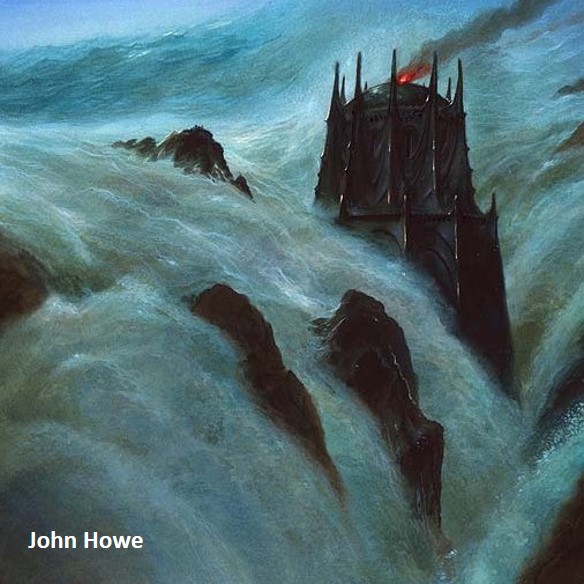
Arnor & Gondor are formed; the White Tree is replanted (SA 3320): Nimloth, the White Tree of Númenor (and a descendant of Telperion), had been destroyed by Sauron. However, Isildur had planted a seedling in secret, and carried the sapling to Middle-earth during his escape from the destruction of Númenor. It was planted in Minas Ithil. When Sauron took Minas Ithil (which became known as Minas Morgul), he again burned the white tree. However, Isildur once again rescued a sapling, and early in the Third Age, planted it in Minas Anor (later, Minas Tirith).
Isengard & Orthanc are built by Númenorian exiles (SA 3320): The Ring of Isengard and the tower of Orthanc were built by the Dúnedain, Númenor exiles. The fortress and tower provided protection for the northwesternmost region of the kingdom of Gondor. Its imposing tower and encircling, rocky walls were almost impregnable, having only one entrance to gain access. During his escape from Númenor, Elendil brought with him the palantíri, the seven seeing stones, and one was placed in Orthanc. It was used to communicate with other stones in various places around the kingdoms of Arnor and Gondor.
The Last Alliance of Elves & Men is formed (SA 3430): With the One Ring and the Ringwraiths at his disposal, Sauron’s strength grew to be almost insurmountable by the end of the Second Age. It became apparent to the leaders of the free people that only through their combined strength could they hope to stop the Dark Lord. To that end, an alliance was formed between Elendil and Gil-galad. After gathering and making plans in Rivendell, the armies made their way to the plains of Dagorlad outside of Mordor. Forcing their way into Mordor, they besieged Barad-dûr for seven years. Elendil’s son, Anárion, perished during the siege.
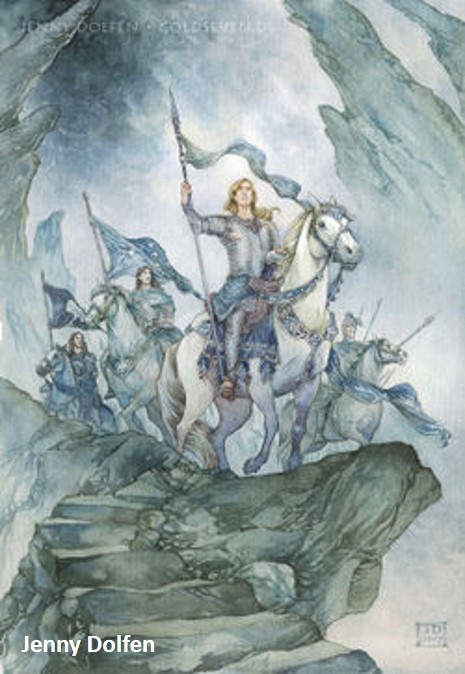
Sauron overthrown by Elendil & Gil-galad, who both perish (SA 3441): In a desperate attempt to end the siege of the Last Alliance, Sauron sent out his host once more to confront the forces of the enemy. To bolster his forces and intimidate the enemy, Sauron himself left Barad-dûr to engage in direct combat. After a long battle, Sauron was felled by Gil-galad and Elendil, who both perished in the attempt.
Isildur cuts the One Ring from Sauron’s finger (SA 3441): As Elendil died, he fell on his sword, Narsil, which broke under him. Immediately thereafter, to help ensure Sauron’s power was truly ended, Isildur took the hilt shard of his father’s sword and cut the One Ring from Sauron’s finger. Without the power of the One Ring, Sauron’s spirit dissipated and disappeared from Middle-earth until later in the Third Age. Elrond and Círdan, lieutenant of Gil-galad, urged Isildur to destroy the Ring once and for all. Instead, Isildur claimed it for himself as wergild for the deaths of his father and brother. Thus, both the One Ring and Sauron survived to wreak havoc once again in the Third Age.
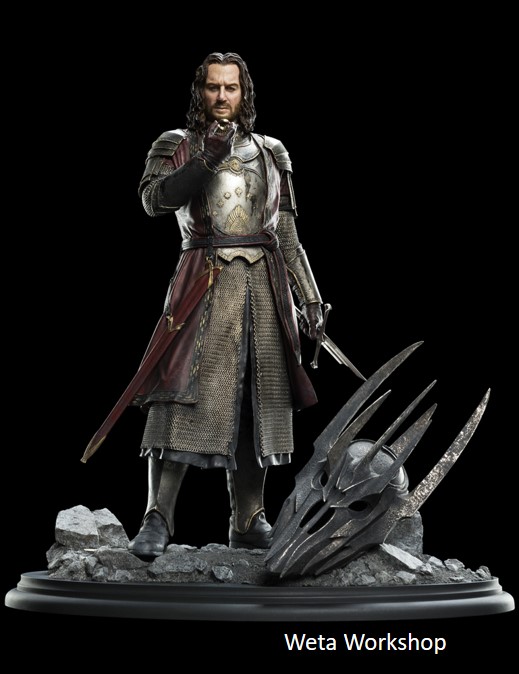
P.S. a word about Galadriel!
Given the important role she played in the events of the Third Age, the absence of Galadriel as a player in the important events of the history of Arda is noticeable. It’s not that we’re ignoring her, it’s just that Tolkien didn’t write her into many, if any really, of the large events, such as the founding of kingdoms and the great battles. From sources like The Silmarillion and Unfinished Tales, we know that she was born in Valinor, made her way to Middle-earth by crossing the Ice of the ice of the Helcaraxë, and spent much of the First Age living in Doriath with Thingol and Melian.
At the beginning of the Second Age, she and her husband Celeborn led many of the Noldor who lived in Eriador, eventually settling in Eregion, ruled by Celebrimbor. When Annatar/Sauron came among the Elves of Eregion, it was Galadriel who was mistrustful of him. She counseled Celebrimbor to keep the Three Elven Rings safely hidden from Sauron, which he did, sending Vilya to Gil-galad, Narya to Cirdan the Shipwright, and giving Nenya to her. After living in various places throughout the rest of the Second Age, she and Celeborn finally settled in Lórien.
So, Galadriel was always in the picture, just not as closely involved in the ‘greatest’ events as others were. Her time to shine would, of course, come in the Third Age and the War of the Ring.
Refresh your memory on Pre-First and First Age events in our previous posts! Ready to VOTE? Click here! You have until end of day Thursday 24th March to vote in Round One; winners will be declared and Round Two launched on Friday 25th. Which event is THE crucial one in the history of Middle-earth? You decide!


